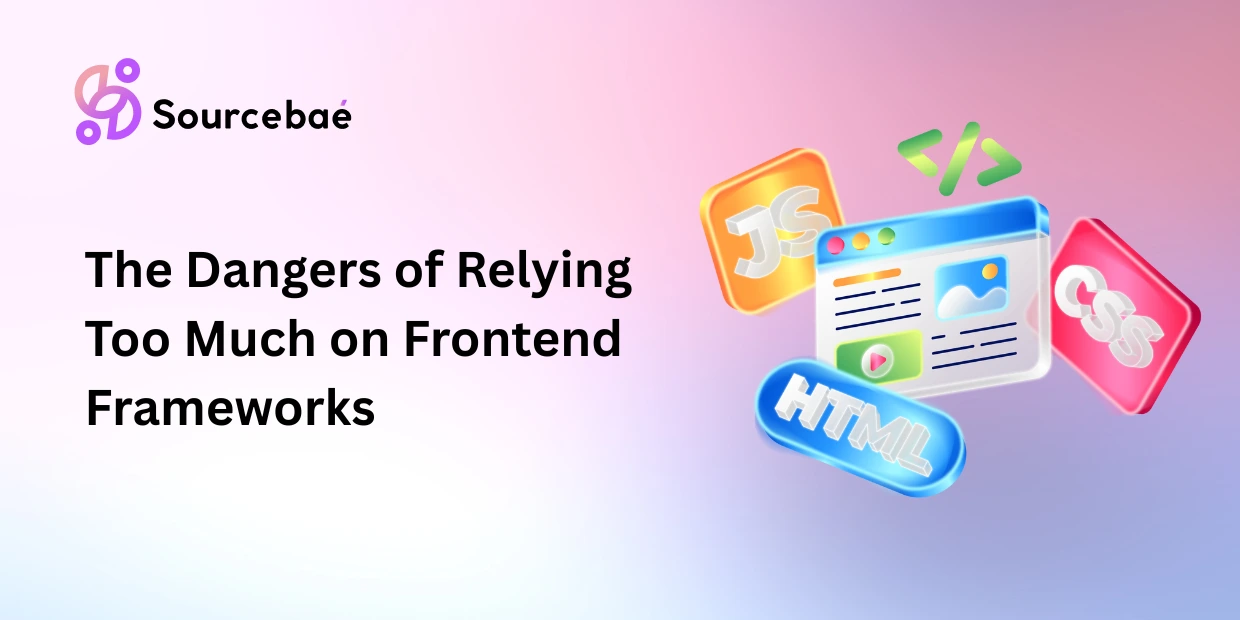In the rapidly evolving landscape of web development, frontend frameworks have emerged as indispensable tools that streamline the process of building modern, responsive, and feature-rich user interfaces. These frameworks, such as React, Angular, and Vue.js, offer developers a structured way to create dynamic and interactive web applications. However, as with any powerful tool, there are potential pitfalls associated with over-reliance on frontend frameworks. In this article, we will explore the dangers that come with excessive reliance on these frameworks and provide actionable insights to help developers navigate these challenges effectively.
Embracing the Power of Frontend Frameworks
Frontend Frameworks: A Blessing or a Curse?
Frontend frameworks undoubtedly empower developers by offering pre-built components, a clear structure, and optimized performance. They enable rapid development, enhance code maintainability, and foster collaboration among developers. The modular nature of these frameworks allows for scalability, making it easier to manage complex applications.
The Allure of Rapid Development
Frontend frameworks accelerate the development process, allowing developers to deliver cutting-edge features and functionalities in shorter time frames. This efficiency can be a game-changer, particularly in fast-paced industries where time-to-market is crucial.
Ensuring Consistency Across Platforms
Frameworks provide a standardized approach to development, ensuring a consistent user experience across different devices and browsers. This consistency enhances user satisfaction and minimizes compatibility issues.
The Perils of Overdependence
Key Challenges of Excessive Reliance on Frontend Frameworks
Dependency Bloat: The Silent Threat
Over time, as a project grows and developers incorporate various libraries and components from the chosen framework, a phenomenon known as “dependency bloat” can occur. This occurs when applications become burdened with unnecessary dependencies, leading to slower load times, increased bandwidth usage, and potential security vulnerabilities.
Performance Bottlenecks: The Need for Speed
While frontend frameworks are designed for optimized performance, improper usage and mismanagement can lead to performance bottlenecks. Overloading a page with complex components and excessive interactivity can result in sluggish user experiences, frustrating visitors and driving them away from the site.
Learning Curve vs. Productivity
Although frameworks simplify development, they often come with a learning curve. Developers need time to grasp the intricacies of a framework before they can fully leverage its potential. This initial investment of time can impact short-term productivity.
Vendor Lock-In: Bound by the Framework
Over-reliance on a single frontend framework can lead to vendor lock-in. If the chosen framework becomes outdated, loses community support, or is superseded by a new technology, migrating to a different solution can be a daunting and resource-intensive task.
Navigating the Risks: Best Practices for a Balanced Approach
1. Evaluate the Project Requirements
Before adopting a frontend framework, thoroughly assess the project’s requirements. Consider factors such as scalability, complexity, and expected user interactions. Opt for a framework that aligns with the project’s unique needs.
2. Modular Development
Practice modular development by breaking down your application into manageable components. This approach not only enhances code reusability but also minimizes dependency bloat.
3. Performance Optimization
Implement performance optimization techniques, such as code splitting and lazy loading, to ensure smooth user experiences. Regularly monitor your application’s performance and address bottlenecks promptly.
4. Learning and Upskilling
Encourage your development team to invest time in learning the chosen framework thoroughly. Provide opportunities for upskilling and peer learning to expedite the learning curve.
5. Diversification of Skills
Avoid over-specialization in a single framework. Encourage developers to diversify their skill sets by exploring alternative frameworks and staying updated with emerging trends in frontend development.
6. Regular Audits and Updates
Periodically review and update the dependencies of your application. Remove obsolete or redundant components and libraries to maintain a lean codebase.
FAQs
What is dependency bloat, and how can it be mitigated?
Dependency bloat refers to the accumulation of unnecessary dependencies in a project, resulting in slower load times and potential vulnerabilities. To mitigate this, conduct regular audits of your project’s dependencies and remove any that are no longer required.
Can I use multiple frontend frameworks in a single project?
While it’s technically possible, using multiple frameworks in a single project can lead to complexity and maintenance challenges. It’s generally recommended to stick with a single framework that best suits the project’s needs.
What are some signs of performance bottlenecks in a frontend application?
Performance bottlenecks can manifest as slow page load times, unresponsive user interfaces, and high resource utilization. Regularly monitor your application’s performance using tools like Lighthouse or Google PageSpeed Insights.
Is it wise to avoid frontend frameworks altogether?
Not necessarily. Frontend frameworks offer valuable tools for efficient development. The key is to strike a balance between utilizing frameworks and maintaining a solid understanding of core web technologies.
How often should I update my frontend framework?
Regularly check for updates and new releases of your chosen framework. Consider updating at least once a quarter to ensure that you’re benefiting from the latest features and security patches.
What should I do if my chosen frontend framework becomes obsolete?
If your chosen framework is no longer actively maintained or supported, consider migrating to a more current solution. While this can be a substantial effort, it’s essential to future-proof your application.
Conclusion
Frontend frameworks have undoubtedly transformed the way we develop web applications, enabling us to create sophisticated and responsive interfaces with ease. However, a prudent approach is necessary to avoid the potential dangers of over-reliance. By evaluating project requirements, optimizing performance, diversifying skills, and practicing mindful development, developers can harness the power of frontend frameworks while mitigating their associated risks. Remember, while frameworks are valuable tools, a deep understanding of fundamental web technologies remains a cornerstone of sustainable development in the dynamic world of web development.
SOURCEBAE: HIRE REACT DEVELOPER





